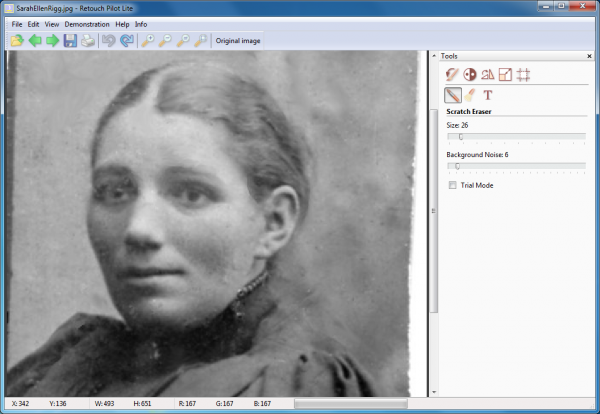
Enhancing a regular digital photo isn’t too difficult, at least at a basic level. Even an editing newbie will quickly get used to tweaking brightness, contrast, color balance and so on, and these image-wide adjustments alone will often be enough to make a huge difference.
Scan some old photos, though – maybe some ancient family shots which have been in someone’s attic for 50 years -- and you’ll face a very different challenge. Issues now are likely to include spots, scratches, dust and other defects. And while you could in theory clean these up with just a basic paint tool, life will probably be very much easier if you install Retouch Pilot Lite.
The program installs easily (it’s adware-free), and on launch displays a panel with links to tutorials for various tasks. This may be useful if you’re a beginner, but otherwise isn’t necessary, so it’s generally best to click “Close” and move on to the main interface.
This is fairly basic, though more or less as you’d expect. There are menus where you can open and save files, zoom in and out, undo your various actions and so on. A toolbar on the right gives access to some basic image editing features (resize, crop, rotate, brightness and contrast adjustments, and so on). But the real value here is the Scratch Eraser, which will help you to clean up your image.
Select this tool, move your mouse cursor over the image, and it’ll change into a small circular brush. Move this so that it surrounds the spot or scratch you’d like to eliminate, then either just click, or click and drag, and the defect should disappear while everything else remains intact.
Does it work? We tried it on a few old black and white images with lots of tiny spots, and the results were generally very good. Zoom in on an area, adjust the Scratch Eraser brush to an appropriate size, and we really could eliminate a huge number of defects at very high speed.
If you try to work on photos that are more detailed, though, or have larger defects, then problems appear. Retouch Pilot Lite becomes less and less able to generate an image which matches with its immediate surroundings, and the results quickly become entirely unusable.
If you’re already an experienced graphics editor, then, familiar with a clone brush and used to repairing minor problems, Retouch Pilot Lite has little to offer.
But, if you’re not sure how you’d remove tiny spots and scratches from an image, or you’re going to have to remove a lot of them and need a quick way to do it, the program may prove useful, and it’s certainly worth a try.

